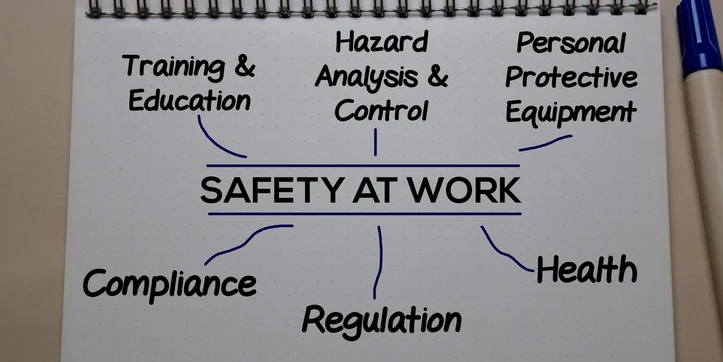Impact of Safety And Health Program On Employee Retention
Increasing employee retention is one of the major goals for an organization. No company wants a revolving door with workers coming and leaving after short stints. To make the workers stay for longer periods, many companies offer a wide range of incentives. However, creating a healthy and safe environment is perhaps the best strategy to boost employee retention.
But how does a well-implemented safety and health program affect employee retention? If the case studies are to be believed, the impact of such programs is profound.
In a study from 2014, it was revealed that a well-executive health and program can increase employee retention by 55%. This revelation shouldn’t come as a surprise considering no one wants to spend 40 hours of their week in an unsafe and unhealthy environment.
Beyond the obvious benefits, here’s the five ways in which health and safety impacts employee retention in a company.
5 Ways A Safety and Health Program Improves Employee Retention

Here are five ways in which a well-executive safety program affects employee retention and allows organizations to retain their best-performing workers.
1. Decreased Workplace Accidents
A comprehensive health and safety program not only promotes physical and mental well-being but it also reduces workplace accidents. This means your employees don’t take leaves or quit work due to minor or major injuries. So while fostering health and safety in workplaces is an ethical thing to do, it also provides incredible financial value to an organization.
2. Increased Job Satisfaction
When employees feel their health and safety is a priority, they tend to be more satisfied with their jobs. This satisfaction translates into higher motivation and loyalty, ultimately increasing retention rates. Employees with higher satisfaction are less likely to switch even if they get better offers from other businesses.
3. Enhanced Productivity
Safe and healthy working conditions enable employees to perform their tasks more efficiently without fear of accidents or health concerns. This leads to improved productivity and this makes employees more valuable to the organization and less likely to leave. A productive employee also has a higher likelihood of being recognized and promoted, which in turn enhances their job satisfaction and commitment. This further decreases the chances of them leaving.
4. Lower Absenteeism
Effective health and safety programs help reduce absenteeism due to illnesses or injuries. When employees have fewer reasons to miss work, it not only benefits the organization but also contributes to higher job satisfaction and retention. Lower absenteeism allows employees to build a strong connection with their companies, decreasing the chance of them leaving even further.
5. Positive Company Reputation
Organizations that prioritize health and safety are often viewed more favorably by employees and potential recruits. A strong safety culture can attract and retain top talent who seek stability and a commitment to their well-being. Better company reputation means many employees won’t leave because working for your company enhances their resume and future career prospects.
How To Create An Impactful Safety And Health Program
When it comes to safety and health programs, a cookie-cutter strategy rarely works. Instead, you need to put thought and effort into creating something that will provide value to your organization.

1. Understand the Importance
The foundation of any successful health and safety program lies in understanding its significance. Begin by recognizing the value of workplace safety not only in terms of adherence but also in creating a positive work environment. Highlight the potential risks and consequences of neglecting safety, making it clear why a robust program is crucial.
2. Assess Workplace Hazards
Conduct a thorough assessment of workplace hazards. Identify potential risks, from physical hazards to ergonomic concerns, and involve employees in this process. Their insights can be invaluable in pinpointing areas that require attention. A comprehensive understanding of risks will guide program development.
3. Develop Policies and Procedures
Once hazards are identified, develop clear and comprehensive policies and procedures to address them. Ensure that these guidelines are accessible and understandable to all employees. Define responsibilities and create reporting mechanisms for incidents or concerns. Regularly update these policies to stay aligned with evolving needs.
4. Train and Educate
An impactful health and safety program includes ongoing training and education for employees at all levels. Provide training sessions on safety protocols, emergency procedures, and the proper use of safety equipment. Encourage a culture of continuous learning by offering resources and promoting open communication about safety concerns. You can enroll you team into OSHA 10-hour construction training to get them up to speed on safety adherence.
5. Monitor and Improve
Continuous monitoring and evaluation are vital for the success of any health and safety program. Implement regular safety audits, incident reporting systems, and feedback mechanisms. Analyze data to identify trends and areas for improvement. Adjust the program as needed to adapt to changing circumstances and regulations.
Conclusion
So to answer the question: how does a well-implemented safety and health program affect employee retention? The answer is: it can have an extremely significant impact. A well-crafted safety and health program can provide incredible value to your company in terms of employee retention. However, you need to invest in this program and bring continuous improvement to make it more effective. Perhaps the best thing for businesses to create a safer environment is to leverage online learning and enroll their staff in courses like OSHA 30-hour construction. By staying compliant and investing in your employees’ safety, you can reduce turnover and focus your efforts towards sustainable growth.
Related Posts

Daily Pre-Task Safety Planning in Construction Sites

Training on a Budget? Find OSHA Training at a Low Price


